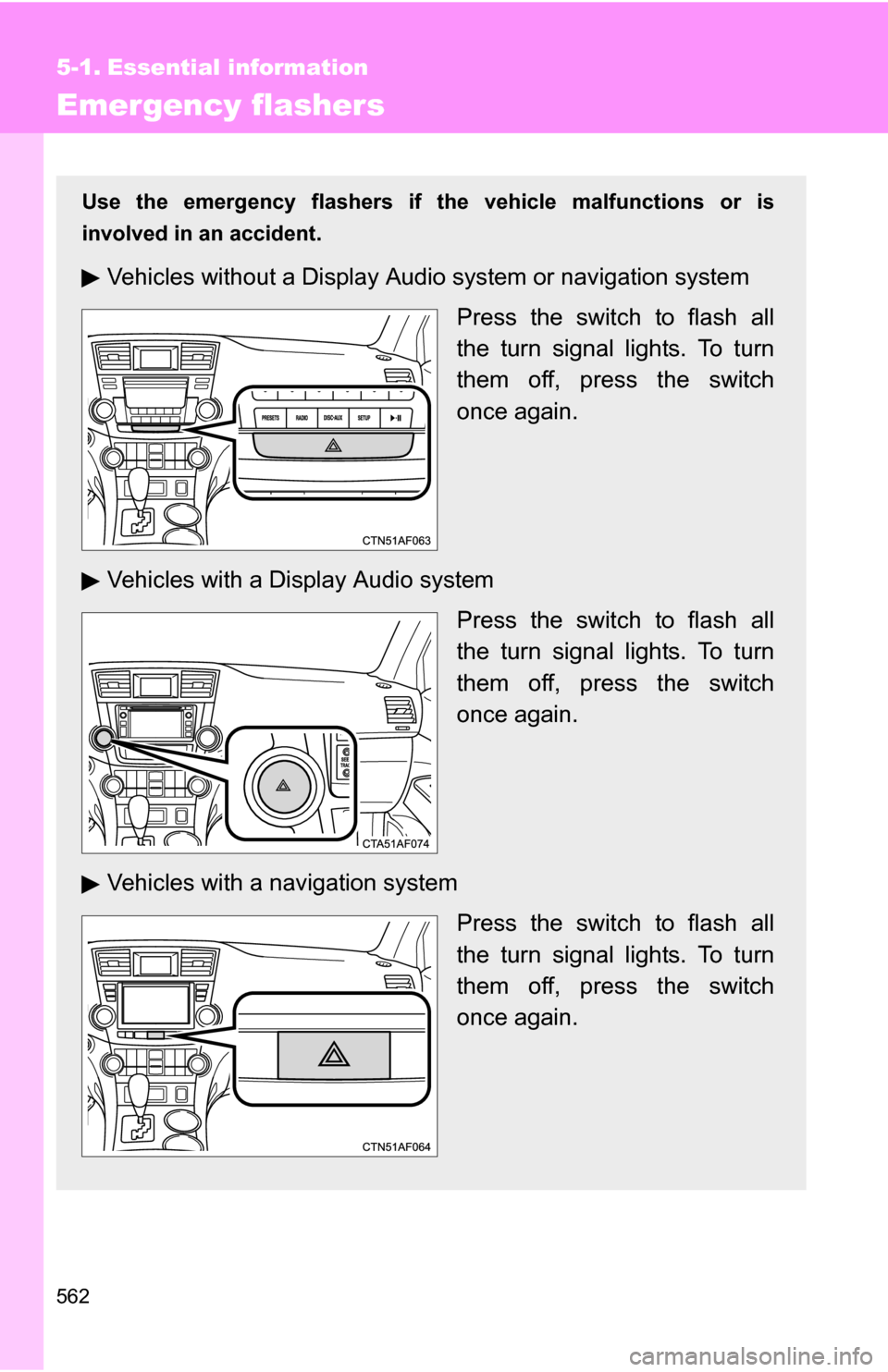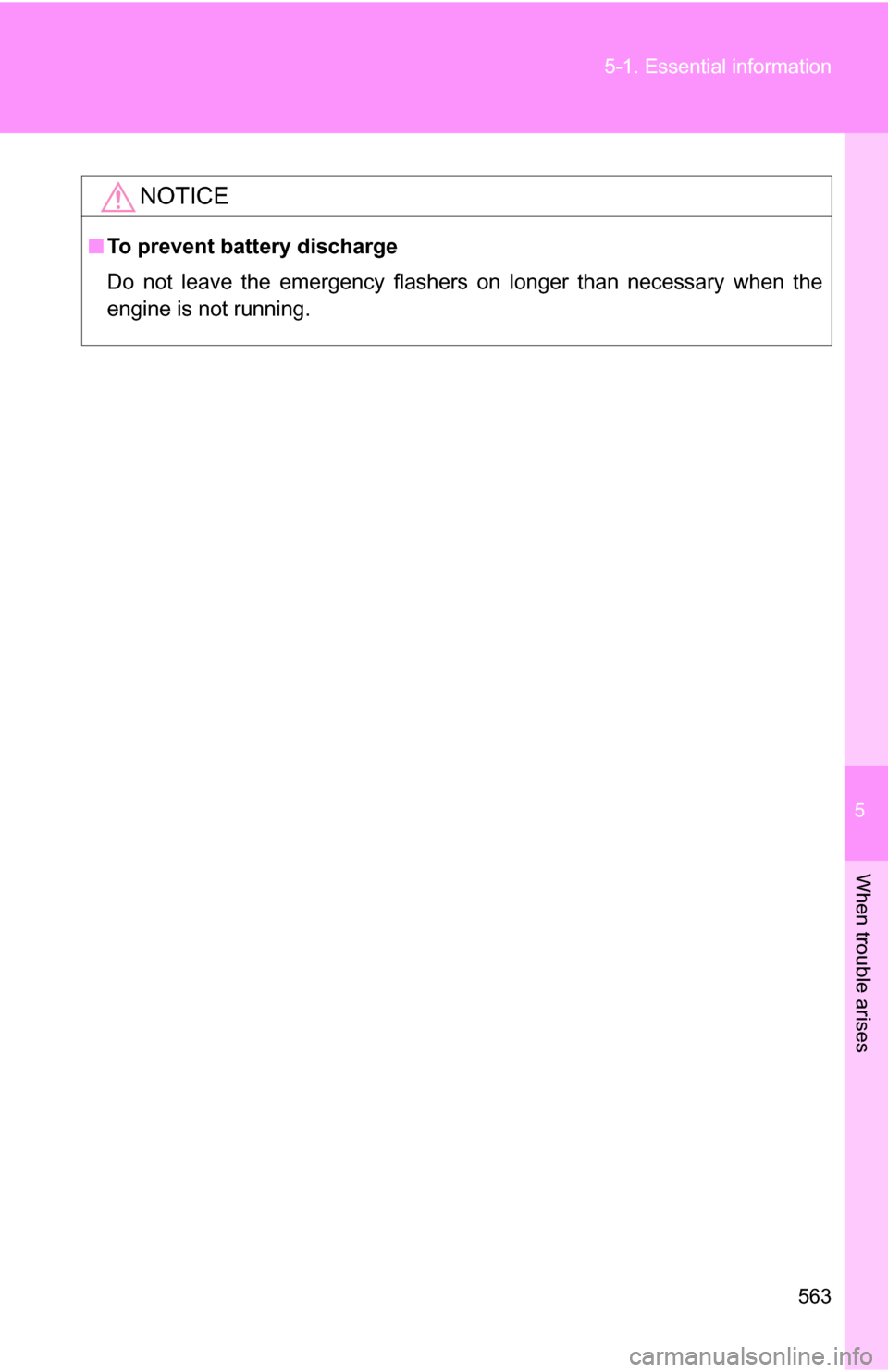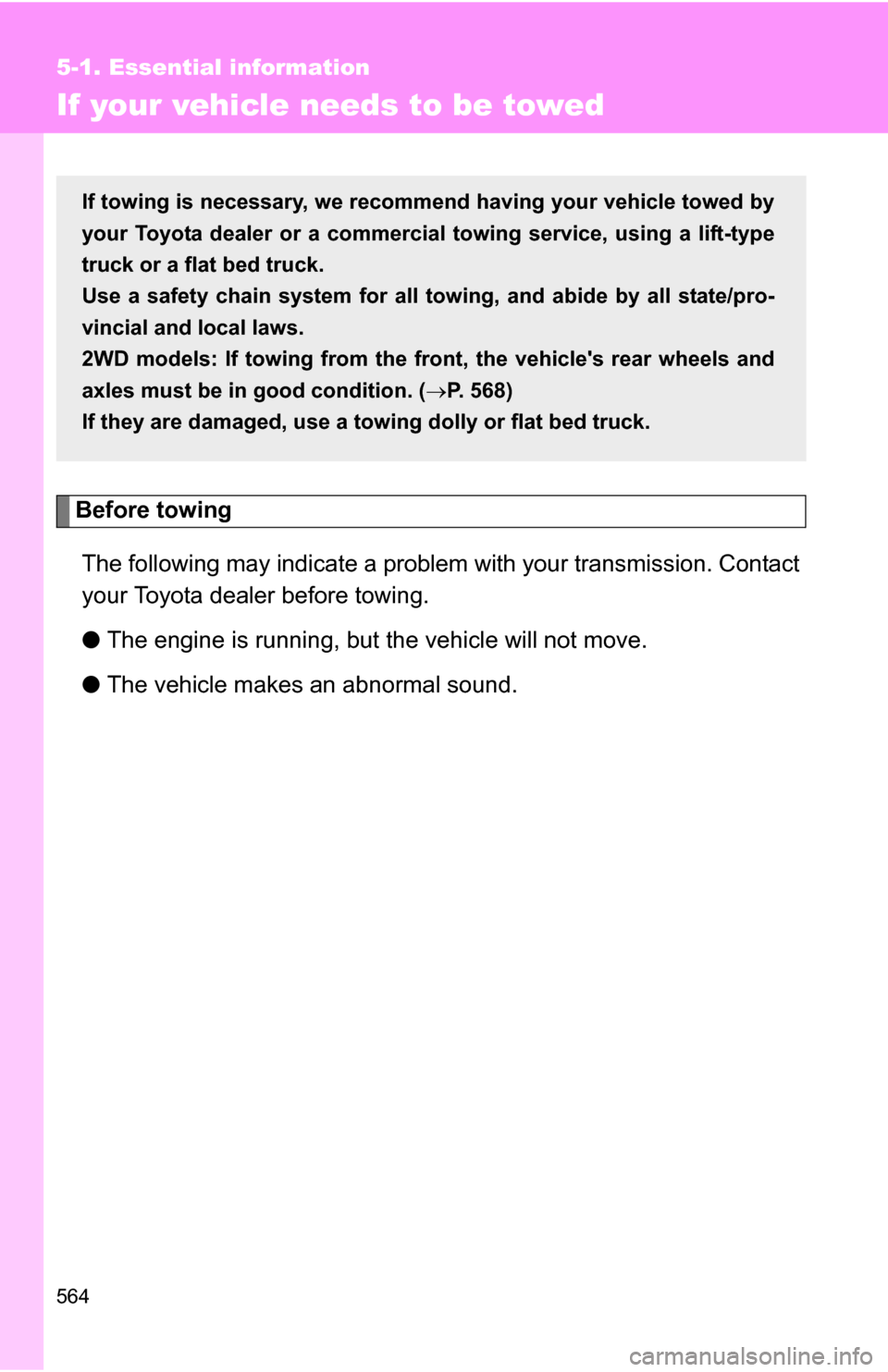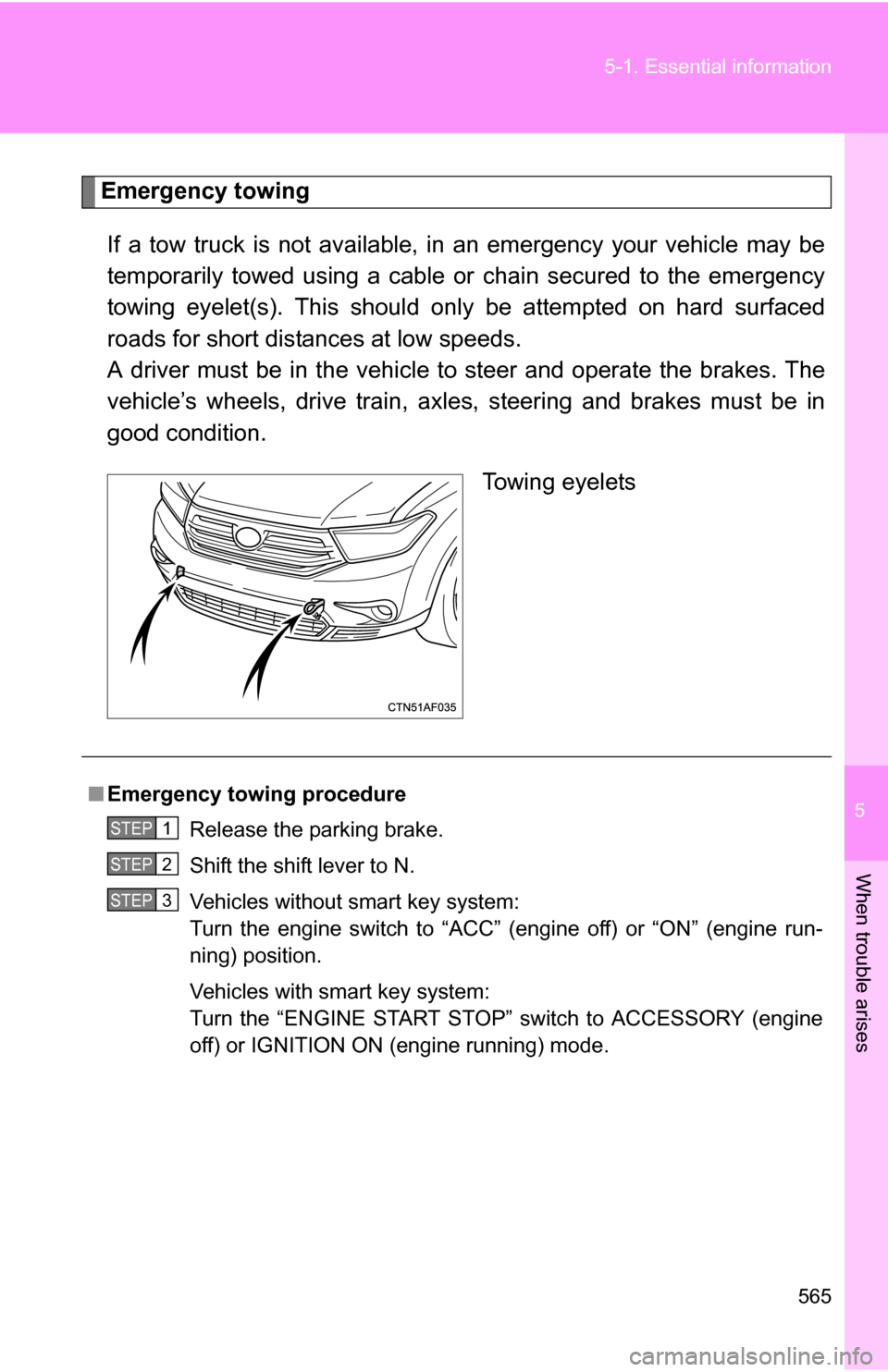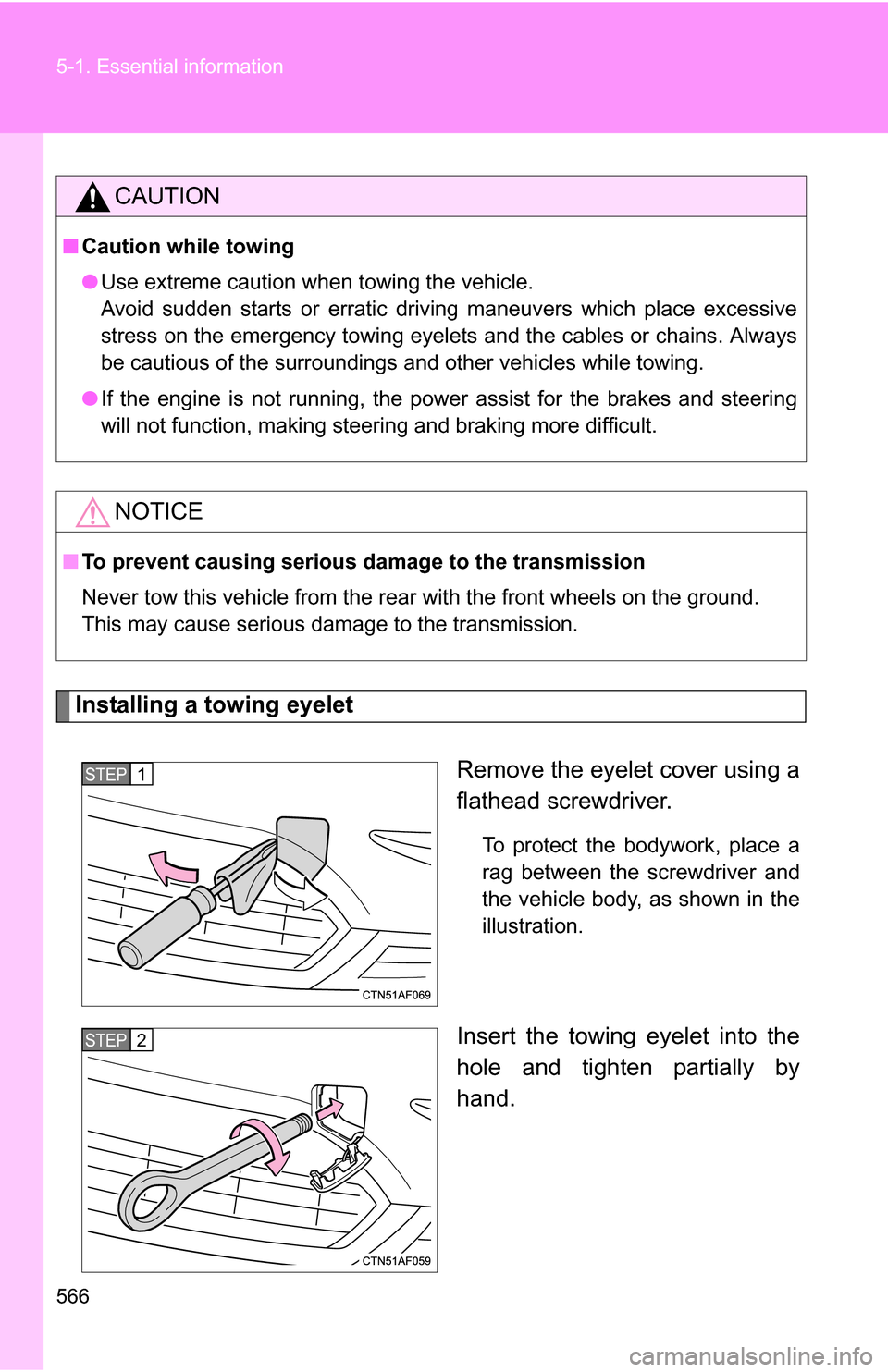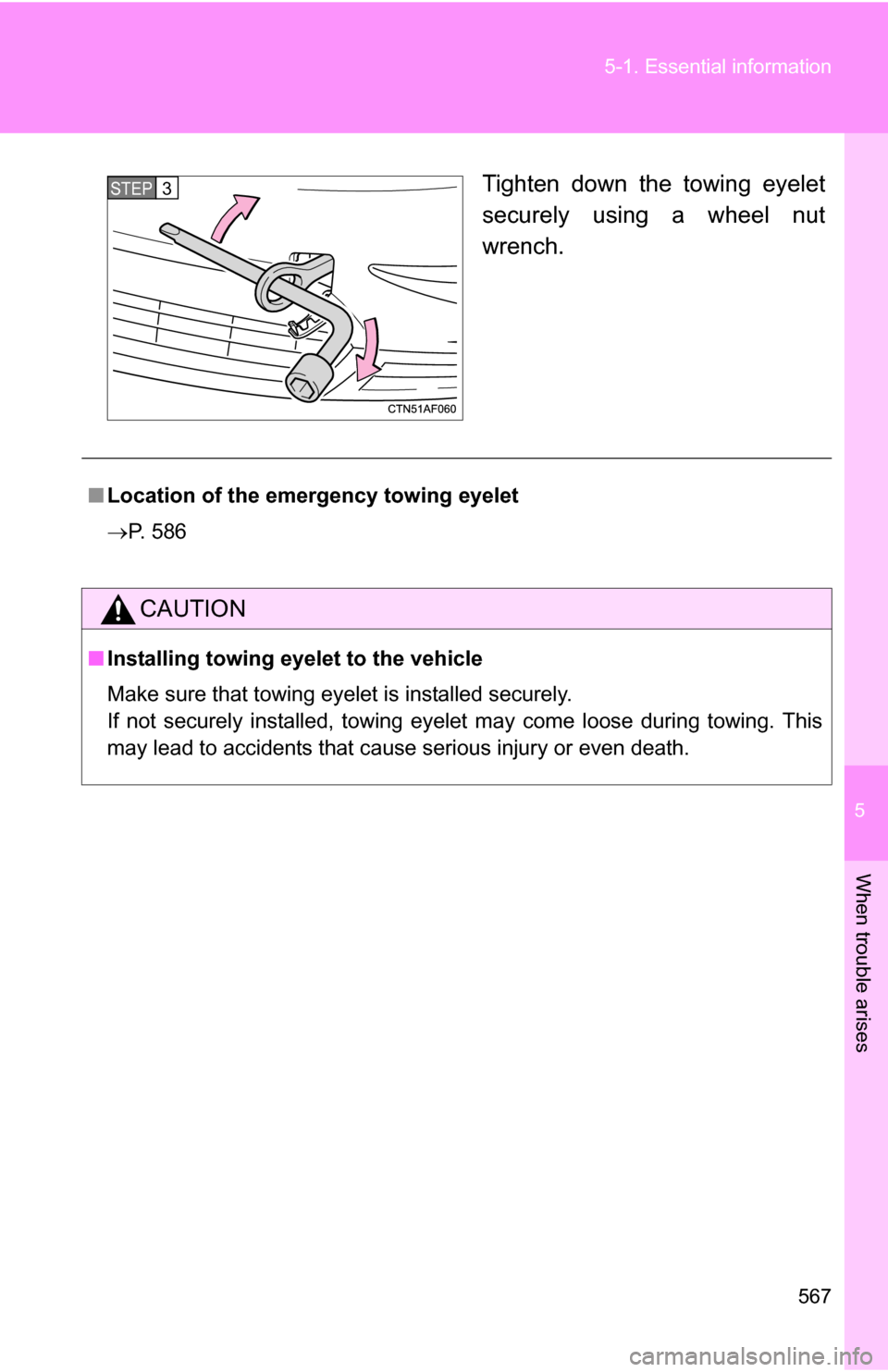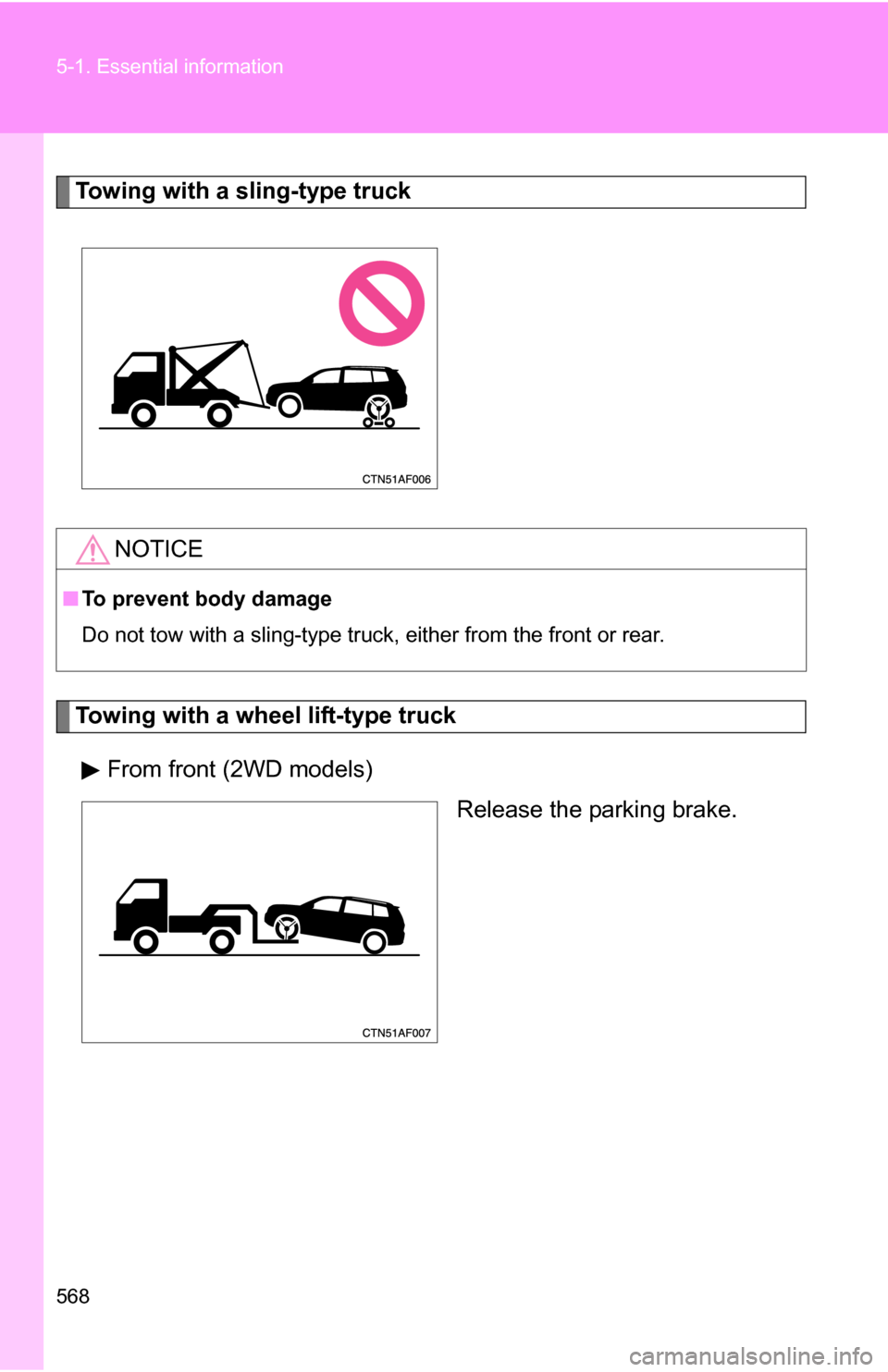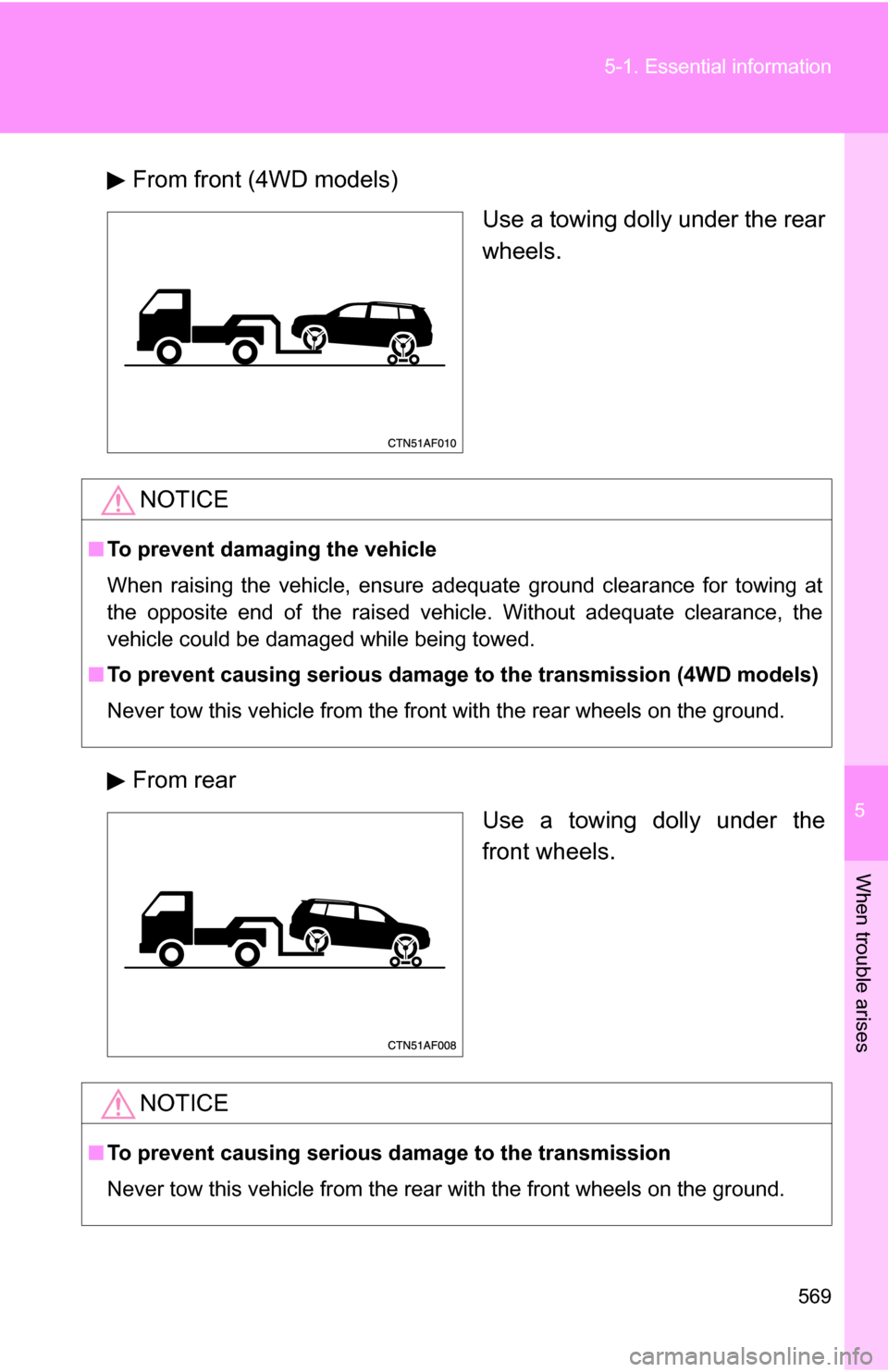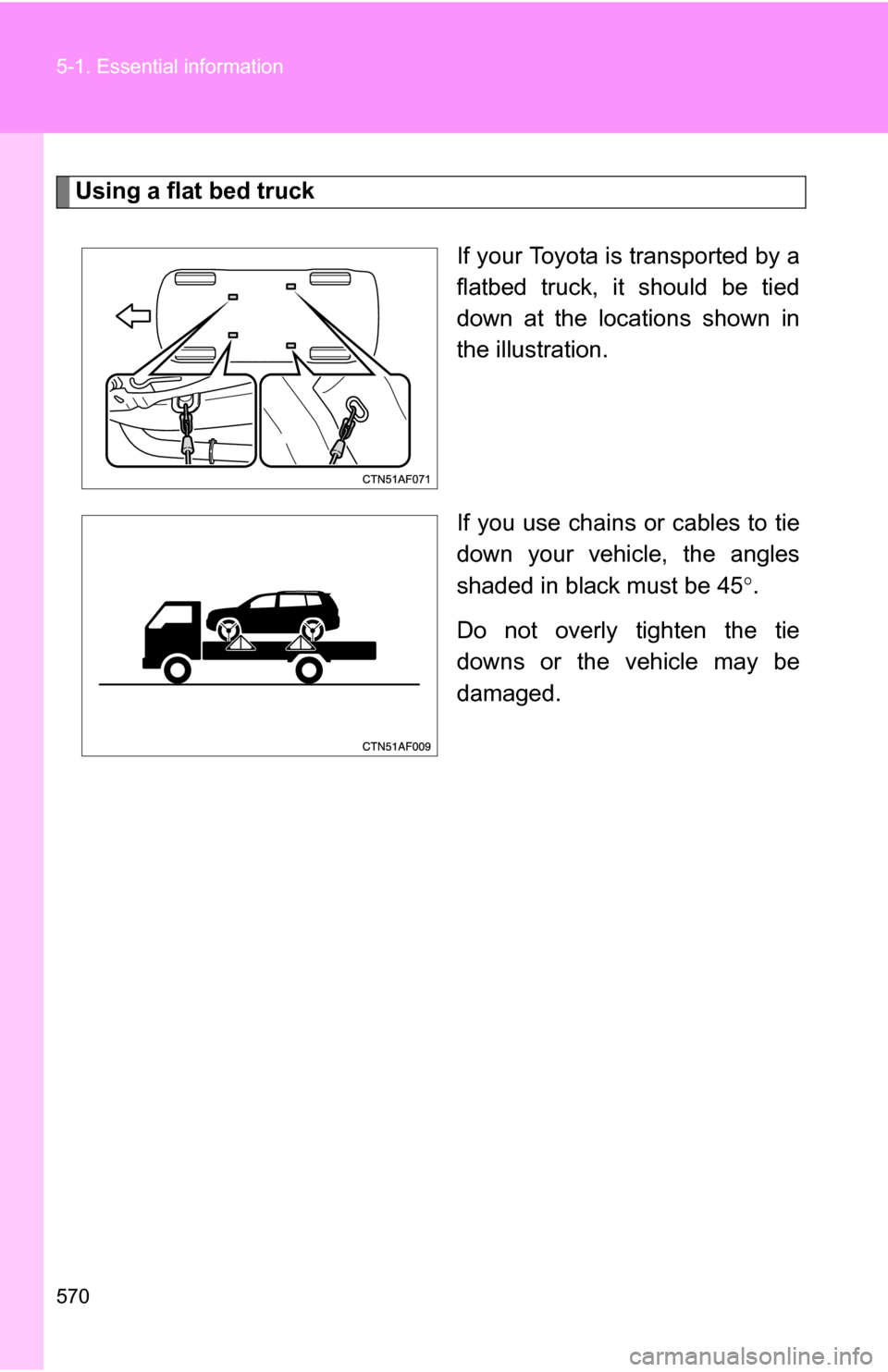TOYOTA HIGHLANDER 2013 XU50 / 3.G Owners Manual
HIGHLANDER 2013 XU50 / 3.G
TOYOTA
TOYOTA
https://www.carmanualsonline.info/img/14/6413/w960_6413-0.png
TOYOTA HIGHLANDER 2013 XU50 / 3.G Owners Manual
Trending: transmission oil, checking oil, rear view mirror, fog light, service interval, change key battery, child lock
Page 561 of 684
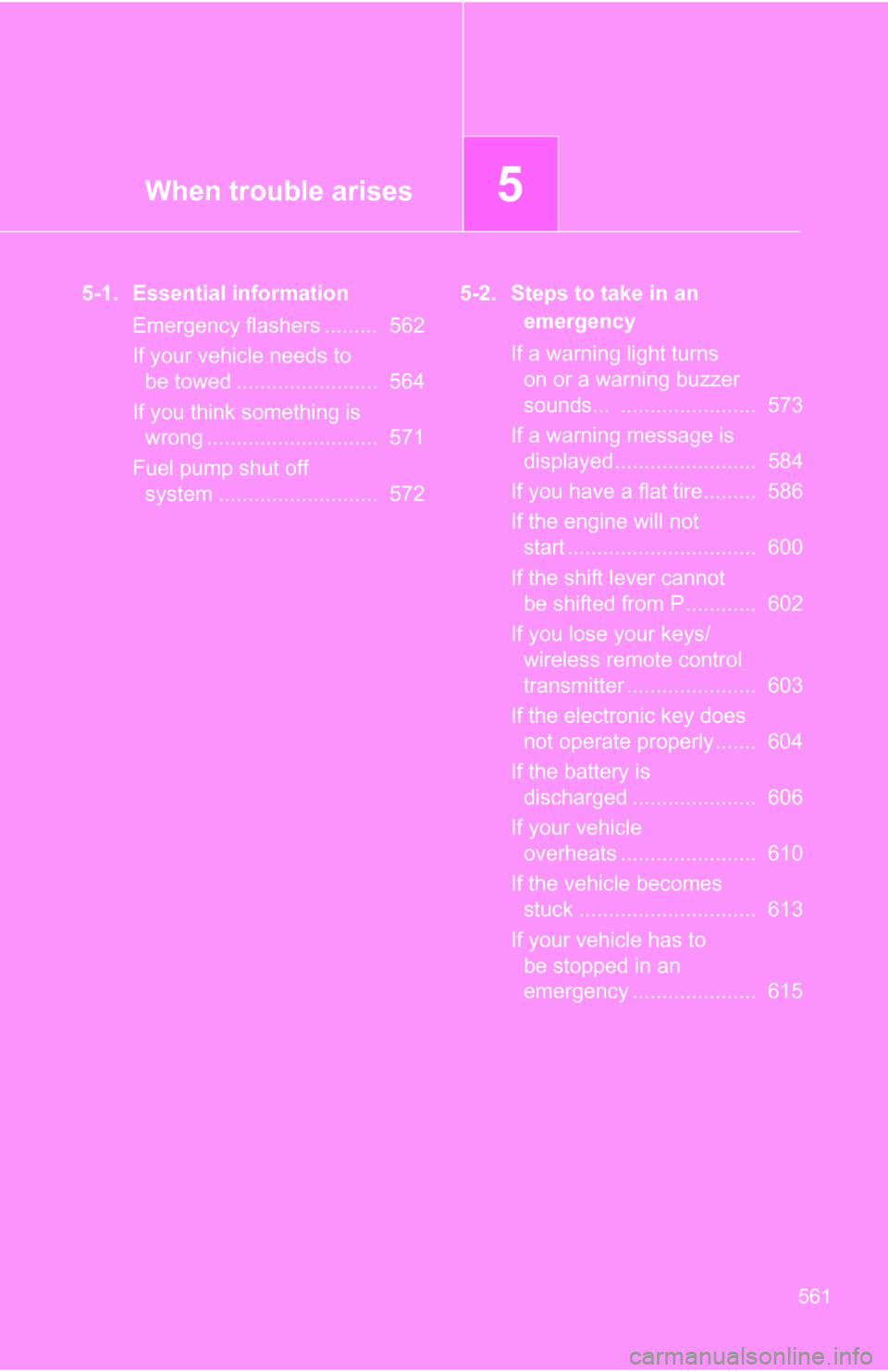
When trouble arises5
561
5-1. Essential informationEmergency flashers ......... 562
If your vehicle needs to be towed ........................ 564
If you think something is wrong ............................. 571
Fuel pump shut off system ........................... 572 5-2. Steps to take in an
emergency
If a warning light turns on or a warning buzzer
sounds... ....................... 573
If a warning message is displayed........................ 584
If you have a flat tire......... 586
If the engine will not start ................................ 600
If the shift lever cannot be shifted from P............ 602
If you lose your keys/ wireless remote control
transmitter ...................... 603
If the electronic key does not operate properly....... 604
If the battery is discharged ..................... 606
If your vehicle overheats ....................... 610
If the vehicle becomes stuck .............................. 613
If your vehicle has to be stopped in an
emergency ..................... 615
Page 562 of 684
562
5-1. Essential information
Emergency flashers
Use the emergency flashers if the vehicle malfunctions or is
involved in an accident.
Vehicles without a Display Audio system or navigation system
Press the switch to flash all
the turn signal lights. To turn
them off, press the switch
once again.
Vehicles with a Display Audio system Press the switch to flash all
the turn signal lights. To turn
them off, press the switch
once again.
Vehicles with a navigation system Press the switch to flash all
the turn signal lights. To turn
them off, press the switch
once again.
Page 563 of 684
5
When trouble arises
563
5-1. Essential information
NOTICE
■
To prevent battery discharge
Do not leave the emergency flashers on longer than necessary when the
engine is not running.
Page 564 of 684
564
5-1. Essential information
If your vehicle needs to be towed
Before towingThe following may indicate a problem with your transmission. Contact
your Toyota dealer before towing.
● The engine is running, but the vehicle will not move.
● The vehicle makes an abnormal sound.
If towing is necessary, we recommend having your vehicle towed by
your Toyota dealer or a commerci al towing service, using a lift-type
truck or a flat bed truck.
Use a safety chain system for all to wing, and abide by all state/pro-
vincial and local laws.
2WD models: If towing from the fr ont, the vehicle's rear wheels and
axles must be in good condition. (P. 568)
If they are damaged, use a towing dolly or flat bed truck.
Page 565 of 684
5
When trouble arises
565
5-1. Essential information
Emergency towing
If a tow truck is not available, in an emergency your vehicle may be
temporarily towed using a cable or chain secured to the emergency
towing eyelet(s). This should only be attempted on hard surfaced
roads for short distances at low speeds.
A driver must be in the vehicle to steer and operate the brakes. The
vehicle’s wheels, drive train, axles, steering and brakes must be in
good condition.
Towing eyelets
■Emergency towin g procedure
Release the parking brake.
Shift the shift lever to N.
Vehicles without smart key system:
Turn the engine switch to “ACC” (engine off) or “ON” (engine run-
ning) position.
Vehicles with smart key system:
Turn the “ENGINE START STOP” switch to ACCESSORY (engine
off) or IGNITION ON (engine running) mode.
STEP1
STEP2
STEP3
Page 566 of 684
566 5-1. Essential information
Installing a towing eyeletRemove the eyelet cover using a
flathead screwdriver.
To protect the bodywork, place a
rag between the screwdriver and
the vehicle body, as shown in the
illustration.
Insert the towing eyelet into the
hole and tighten partially by
hand.
CAUTION
■Caution while towing
●Use extreme caution when towing the vehicle.
Avoid sudden starts or erratic driving maneuvers which place excessive
stress on the emergency towing eyelets and the cables or chains. Always
be cautious of the surroundings and other vehicles while towing.
● If the engine is not running, the power assist for the brakes and steering
will not function, making steering and braking more difficult.
NOTICE
■To prevent causing serious dama ge to the transmission
Never tow this vehicle from the rear with the front wheels on the ground.
This may cause serious damage to the transmission.
STEP1
STEP2
Page 567 of 684
5
When trouble arises
567
5-1. Essential information
Tighten down the towing eyelet
securely using a wheel nut
wrench.STEP3
■
Location of the emer gency towing eyelet
P. 586
CAUTION
■ Installing towing eyelet to the vehicle
Make sure that towing eyelet is installed securely.
If not securely installed, towing eyelet may come loose during towing. This
may lead to accidents that cause serious injury or even death.
Page 568 of 684
568 5-1. Essential information
Towing with a sling-type truck
Towing with a wheel lift-type truckFrom front (2WD models) Release the parking brake.
NOTICE
■To prevent body damage
Do not tow with a sling-type truck, either from the front or rear.
Page 569 of 684
5
When trouble arises
569
5-1. Essential information
From front (4WD models)
Use a towing dolly under the rear
wheels.
From rear Use a towing dolly under the
front wheels.
NOTICE
■To prevent damaging the vehicle
When raising the vehicle, ensure adequate ground clearance for towing at
the opposite end of the raised vehicle. Without adequate clearance, the
vehicle could be damaged while being towed.
■ To prevent causing serious damage to the transmission (4WD models)
Never tow this vehicle from the front with the rear wheels on the ground.
NOTICE
■ To prevent causing serious da mage to the transmission
Never tow this vehicle from the rear with the front wheels on the ground.
Page 570 of 684
570 5-1. Essential information
Using a flat bed truckIf your Toyota is transported by a
flatbed truck, it should be tied
down at the locations shown in
the illustration.
If you use chains or cables to tie
down your vehicle, the angles
shaded in black must be 45.
Do not overly tighten the tie
downs or the vehicle may be
damaged.
Trending: check engine light, radio antenna, tire pressure reset, fuel tank capacity, clock, key, brake rotor

